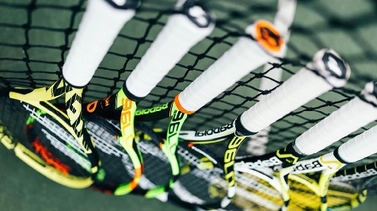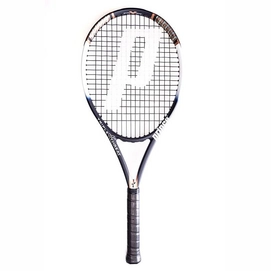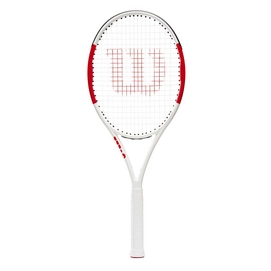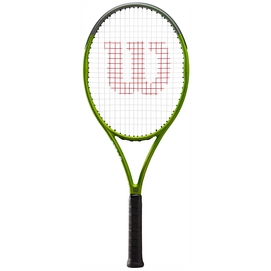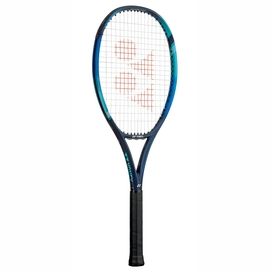Best Tennis Racket
Important Factors to Consider
Type of Swing
The type of swing you possess is very important in determining how flexible and mobile the tennis racket that best suits you should be. A tennis racket with good flexibility is useful in all rally situations. However, flexibility is the most important when you're serving or playing at the net. The weight and balance point of a tennis racket must have a pronounced bearing on flexibility. A tennis racket with maximum flexibility is normally light in weight, short in height and has a high balance point.
There are three types of swings:
Long swing = a lot of control is needed in the tennis racket as the swing generates power.
Average swing = an all round swing needs a racket that caters for control and acceleration.
Short swing = requires a frame that will help generate power
Head Size
The head size of a tennis racket is the surface area of the strings. It can be measured in either cm² or in inch² and 1 inch²=6.45 cm². Usually, the power or striking strength of a tennis racket is in proportion with the head size. The bigger the head size, the more power a tennis racket generates, but the less ball control you have.
There are four different categories of tennis racket head sizes:
Midsize = Small head size: Maximum of 97 inch² or 625 cm²
Mid plus (MP)= Standard head size: 97 - 105 inch² or 626 - 677 cm²
Oversize (OS)= Large head size: 106 - 115 inch² or 678 - 742 cm²
Super oversize= Extra large head size: Minimum of 116 inch² or 742 cm²
Frame Length
The frame length is the length of the entire tennis racket. The standard length of most tennis rackets lie between 68.5 and 69.0 centimetres. A longer tennis racket is also called a Longbody or Stretch racket. The advantage of a longer tennis racket is a bigger reach and more power, especially when serving. However, the amount of control diminishes with a longer frame length.
The classifications of frame length are as follows:
Standard: 68.0 - 69.0 cm :
> Long body: 69.0 cm
Profile Height
The profile height is the height or thickness of the tennis frame and is expressed in millimetres. The thickness of a tennis racket influences the "striking power" of a racket. The rule 'the thinner a tennis racket, the more flexible, the more striking power and the more comfort, but less control' does not stand anymore. You also have to take into account the materials from which the tennis racket has been fabricated. You can assume nowadays that a thin tennis racket, meaning a tennis racket with a thin profile height, is usually a heavier tennis racket which gives you a lot of ball control, but less power or striking strength. A tennis racket with a thick profile height is usually a light racket with less ball control, but large striking power.
Overview:
17.0 - 20.9 mm - tennis racket with a lot of control
21.0 - 22.9 mm - tennis racket with average control
23.0 - 24.9 mm - all round tennis racket
25.0 - 26.9 mm - all round tennis racket
27.0 - 28.9 mm - tennis racket with average power
> 29.0 mm - tennis racket with a lot of power
Weight
The weight of a tennis racket is expressed in grams. Normally the heavier the tennis racket, the more ball control. If the racket is lighter you can put more power into your shots.
Weight overview
< 320 grams - very heavy tennis racket
300 - 319 grams - heavy tennis racket
280 - 299 grams - standard weight tennis racket
260 - 279 grams - reasonably light tennis racket
240 - 259 grams - light tennis racket
220 - 239 grams - very light tennis racket>
220 grams - ultra light tennis racket
Balance Point
The balance point of a tennis racket is the point where the tennis racket is equally balanced between the head and the handle. The average length of a tennis racket is around 68 cm, which means that a racket with a balance point of between 33 and 34 cm is a perfectly balanced racket. When the balance point is less than 33 cm, meaning there is more weight in the handle, the racket is considered "handle heavy" or "handle weight." With a balance point of more than 34 cm, with more weight in the head, the racket is "head heavy" or "top weighted"
Head heavy or top weight rackets
The advantage of this type of tennis racket is that it generates more power and strinking strength. The main disadvantage is that there is sometimes reduced ball control with a less experienced player.
Handle heavy or handle weight rackets
A tennis racket with more weight in the handle offers more ball control. This is designed for competitive tennis players who have enough striking strength to generate their own power.
Balance point over view:
29.0 - 30.9 cm - very handle heavy tennis racket
31.0 - 32.9 cm - handle heavy tennis racket
33.0 - 34.9 cm - all round tennis racket
35.0 - 36.9 cm - head heavy tennis racket
< 37 cm - very head heavy tennis racket
